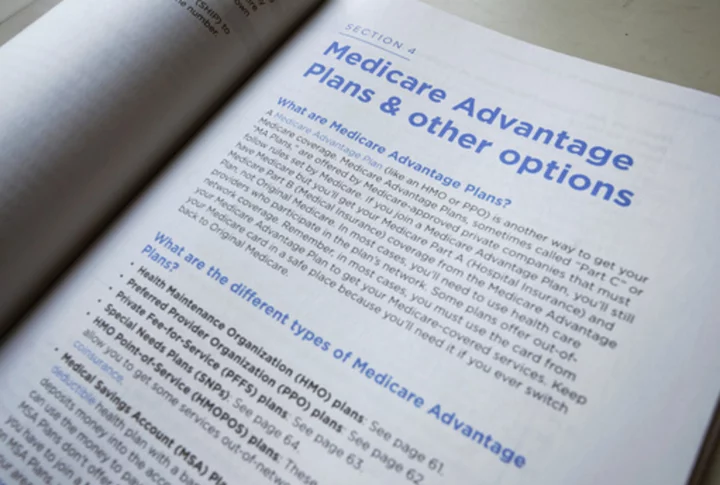Only 3 in 10 Medicare beneficiaries shop around during open enrollment, according to a 2022 analysis from KFF, a health policy nonprofit — and only 1 in 10 Medicare Advantage enrollees voluntarily switch plans. But a 2020 analysis of Medicare Advantage plan choices by the National Bureau of Economic Research found that more than half of beneficiaries overspent by more than $1,000 due to the plan they selected.
Medicare open enrollment is Oct. 15 to Dec. 7, giving people with Medicare a chance to change plans for the upcoming year. Although potential Medicare Advantage enrollees may be swayed by $0 premiums and extra perks like vision and dental coverage, there are more important features to explore when you’re choosing next year’s coverage.
Here are some practices to avoid as you shop for Medicare Advantage this fall.
1. THINKING MEDICARE ADVANTAGE IS MEDICARE
If you’re considering Medicare Advantage, understand that it’s not the same thing as government-provided Medicare. It offers the same benefits, but Medicare Advantage is run by private health insurance companies and it operates differently.
“You are essentially taking the Medicare coverage that you’ve been provided by the government and turning that in,” says Melinda Caughill, co-founder and CEO of 65 Incorporated, which offers Medicare guidance.
You can switch back to Original Medicare during each year’s open enrollment period, but you may not be able to qualify for an affordable Medicare Supplement Insurance, or Medigap, plan once you’re past the one-time Medigap open enrollment period. (Medigap helps with certain out-of-pocket costs not covered by Original Medicare.)
2. ASSUMING YOUR DOCTORS ARE IN NETWORK
Medicare Advantage plans operate within networks of medical providers, and you usually must see in-network doctors for covered care.
“A lot of people don’t realize that — especially those $0-premium plans — they tend to have fairly confined networks,” says Emily Gang, CEO of the Medicare Coach, a site that provides Medicare guidance. “You want to double-check that your doctor is actually an approved provider in that network.”
Ask your providers what insurance they’ll be accepting in 2024, suggests Sarah Murdoch, director of client services for the Medicare Rights Center, a nonprofit consumer advocacy organization. It’s easier than trying to check each plan’s network individually.
3. NOT CHECKING YOUR DRUG COVERAGE
Like network providers, drug coverage can also change each year. Your drug plan might cover one of your medications differently in 2024, leaving you with more out-of-pocket costs than you expected.
“If you take even one brand name medication, your need to compare plans is incredibly high,” Caughill says. No brand names on your list? Shop around if you take five or more medications in general.
4. BUYING FOR THE DENTAL BENEFITS
Medicare Advantage plans usually include benefits that aren’t part of Original Medicare, such as dental, vision or hearing coverage. These extras may be appealing, but don’t let them steer your plan choice.
“First of all, it’s health insurance — so how is it going to cover your health care providers and your medications?” says Katy Votava, who holds a doctorate in health economics and nursing and is president and founder of Goodcare, a consulting firm focused on the economics of Medicare. “If you pick (your plan) for a benefit that isn’t health insurance, you’re often picking wrong. And the dental benefit is pretty limited in all these plans — it’s a couple of cleanings and some bite wings.”
5. LOOKING AT THE PREMIUM ONLY
The majority of Medicare Advantage enrollees are in plans with no premium, meaning you pay nothing each month for the plan. “People see that $0 premium and they’re like, ‘Oh, it’s free,’” Gang says. “And it’s not.”
Research the rest of the plan’s costs before you sign up, including deductibles, copays, coinsurance and the out-of-pocket maximum, which is the most you might have to spend on covered care in a year. In 2023, the out-of-pocket max can be as high as $8,300 for in-network care.
6. BUYING BECAUSE YOUR FRIEND HAS IT
People eligible for Medicare are bombarded by information during open enrollment, and it can be overwhelming. “They don’t shop,” Votava says. “They go with name recognition or what their friend has.”
The better choice: Focus on your own situation and find the plan that meets your needs.
If you need help, contact your State Health Insurance Assistance Program, or SHIP, for free Medicare guidance. Just don’t wait until the last minute, because appointments fill up, Votava says. “If you need individual help, you’d better get on the list.”
____________________________________________
This article was provided to The Associated Press by the personal finance website NerdWallet. Kate Ashford is a writer at NerdWallet. Email: kashford@nerdwallet.com. Twitter: @kateashford.
RELATED LINKS:
NerdWallet: Medicare open enrollment 2024: What you need to know https://bit.ly/nerdwallet-medicare-open-enrollment
Centers for Medicare & Medicaid Services: Get ready to buy: Your Medigap open enrollment period https://www.medicare.gov/health-drug-plans/medigap/ready-to-buy
State Health Insurance Assistance Program https://www.shiphelp.org/
METHODOLOGY:
KFF’s analysis of Medicare beneficiaries who compare plans during open enrollment uses survey data for community-dwelling Medicare beneficiaries from the Centers for Medicare & Medicaid Services (CMS) Medicare Current Beneficiary Survey (MCBS) 2020 Survey File. The analysis was weighted to represent the ever-enrolled Medicare population in 2020 using the topical survey weight KNSEWT and relevant replicant weights.
KFF. (November 2022.) “A Relatively Small Share of Medicare Beneficiaries Compared Plans During a Recent Open Enrollment Period.” https://www.kff.org/medicare/issue-brief/a-relatively-small-share-of-medicare-beneficiaries-compared-plans-during-a-recent-open-enrollment-period/
KFF’s analysis of Medicare beneficiaries who switched their coverage during open enrollment uses the Centers for Medicare & Medicaid (CMS) Master Beneficiary Summary File, 5% sample of beneficiaries for 2007 to 2016 and 20% sample for 2017 to 2020. They examined plan enrollment in December of year one (for example, 2019) and January of year two (for example, 2020), to identify beneficiaries who switched plans during the annual open enrollment period.
KFF. (November 2022.) “Medicare Beneficiaries Rarely Change Their Coverage During Open Enrollment.” https://www.kff.org/medicare/issue-brief/medicare-beneficiaries-rarely-change-their-coverage-during-open-enrollment/

